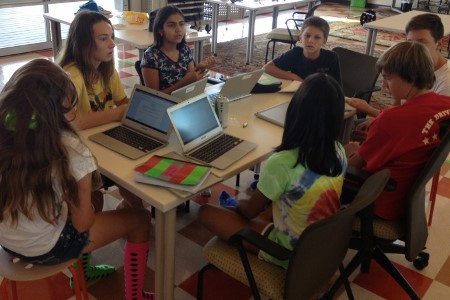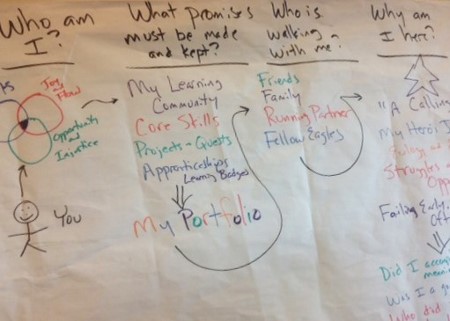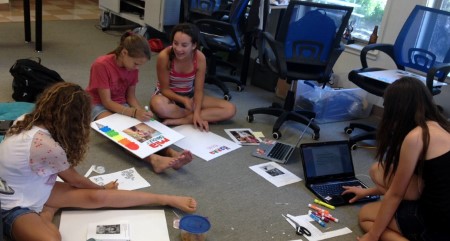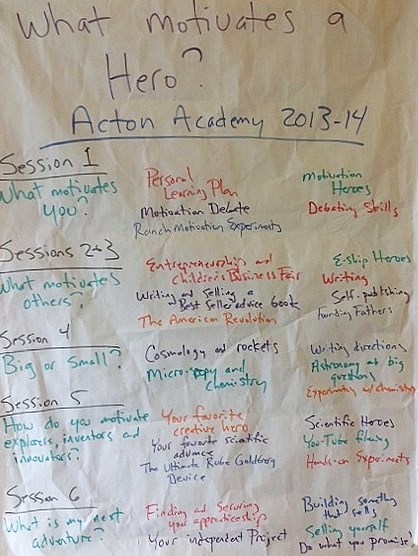Learner-driven communities: The future has arrived
/At a special open house during SXSWedu earlier this month, kids at Acton Academy explained to a crowd of adults—locals and out-of-towners alike—how their unusual school works. Concluding the event, cofounder and guide Jeff Sandefer spoke fervently about his vision for the future of education. Today Jeff joins us as a guest contributor to share some of those thoughts and a few glimpses of daily life at Acton.

I predict that the 21st century will see the rise of learner-driven communities, a disruptive educational force wherein self-directed learners, in a community tightly bound by personal covenants and contracts, use the full power of the Internet to craft a transformative, personalized learning path. Even better, I believe these learner-driven communities will be able to deliver a transformational education for less than $2,000 per student per year.
Sound like a fantasy? It might be, except that I’ve been amazed as I have dug deeply into the research of Sugata Mitra and his Hole-in-the-Wall experiments, where children in some of the poorest villages in Africa and Asia, armed only with an Internet terminal—and no teacher—have outperformed the best privates schools in their countries.
And I have seen it with my own eyes as a middle school guide at Acton Academy, an Austin-based school that uses multiage classrooms, the latest game-based adaptive computer programs for core skills, and questlike adventures for deeper learning in a studio increasingly run by the students themselves.

Our young people at Acton, each believing he or she is on a hero’s journey that will change the world, are learning that courage, grit, and perseverance matter far more than regurgitating facts that easily can be accessed on Google. They are mastering process and technique at a rapid rate, beginning to create personalized courses from expert knowledge, simulations, processes, and challenges that the Internet puts at their fingertips.
In a learner-driven community, each learner chooses his or her own path and challenges, keeping track of multiple projects as early as age six using SMART (specific, measurable, attainable, results-oriented, and time-bound) goals and seeking to earn a series of badges that demonstrate proficiency. The studio is completely governed by the learners, using a series of written covenants and a governance system developed from scratch every year.
There are no grades or homework, though every piece of work is judged or force-ranked by a rigorous peer review, compared to world-class examples, or in a public exhibition. Adults are forbidden from answering a question while in the studio, instead encouraging learners to find the answers on their own or in collaboration with their peers.
By earning badges and collecting work in personalized online portfolios, young heroes in learner-driven communities can prepare to earn apprenticeships at an early age, experimenting with which path might lead to a personal calling in life.

Just as importantly, because these communities are largely self-governing, fewer and fewer adults need to be in the room. This means not only that learning accelerates as it arms our Acton Eagles to become lifelong learners who can tackle real-world challenges, but it may also allow us to deliver a superior education for $2,000 per student per year, as opposed to the $9,000 to $15,000 annual cost per student of a typical traditional school.

Learner-driven communities: an emerging educational force that just might change how we think about learning in the 21st century.
Jeff Sandefer










